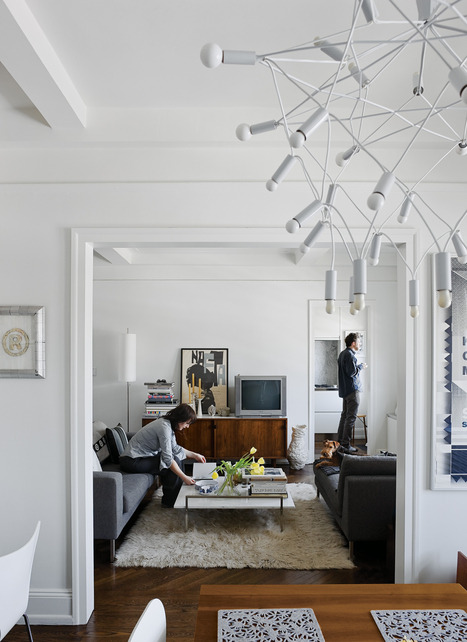Despite all the rain this week, the sun will shine once again, and often, in LA. So, for the solar curious without a large wallet, what cost-effective options exist for residential homeowners? One new option is to lease solar panels from solar installer
SolarCity Corp. Recently awarded $60 million in new financing from PG&E accordingly to the
LA Times, SolarCity offers an extensive lease program designed to make solar installation affordable and cost-beneficial for homeowners. In essence, homeowners lease the equipment from SolarCity to buy the cheap electricity produced by the solar panels, but avoid any upfront installation costs because SolarCity owns and operates all of the equipment still. Lease terms generally run for 15 years, with options for transfering, paying out, or taking the panels with you if you move before the term is over.
Still unsure whether leasing makes sense?
Dwell Magazine had a great overview of the issues involved in buying or leasing solar panels, including an overview of SolarCity's program. Ultimately, the article finds that if you want to own your own solar panels, buy them right away. However, depending on the type of house you own, leasing can be a great option to support renewable energy production, and lower your electric bills by 15% on average. The article provides this cost scenario supplied by SolarCity spokesman Jonathan Bass:
A typical three-bedroom home with a current electricity bill of $200 per month might lease a 4kW solar system. The new solar system will generate enough electricity to offset what the homeowner is currently paying to the utility company from $200 down to $60 per month. The SolarLease payment would be $0 down and $110 per month, amounting to a savings of $360 in the first year.
The other nice part about leasing? "The lease includes permit, installation, maintenance, a web monitoring system, and guaranteed production," says Bass. As such, the agreement relies on a service versus an end product model. Rather than selling consumers a solar panel that they have to maintain and eventually disgard, SolarCity provides the service of solar-powered electricity to consumers, while incurring the material costs. Ideally, this model not only increases the ability of consumers to use solar-power, but will also motivate more
cradle-to-cradle thinking in panel design to reduce the material cost for SolarCity and increase their profits. (See the great book
"Natural Capitalism" for a great discussion of the potential benefits of this model)
SolarCity's
Solar Calculator provides a great place to get an estimate on how much money you might be able to save with their lease program. Of course every home will vary in how cost-effective this program will be, and factors such as roof slope and age will affect the overall lease cost, so be sure to do your homework.
 The Extraterritorial Build in place a week before the opening.
The Extraterritorial Build in place a week before the opening. 












































